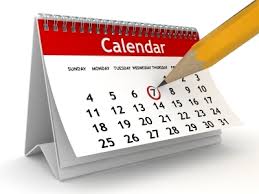June is the month when your garden really gets established and takes off. Here are some timely plant and garden related tips from the University of Tennessee Institute of Agriculture:
Perennials, Annuals, & Bulbs
- Keep your perennials deadheaded to keep them flowering. Be sure to remove the fading flowers down to a leaf node or new bud.
- Cut back by one-third early planted annuals that are getting leggy or out of control to keep them looking good into the fall. Give them a shot of a water-soluble fertilizer. Good candidates include impatiens, salvia, sweet potato vine, trailing or ground-cover type petunias and herbs, such as basil.
- Don’t forget to water newly planted plants. It can still be critical. Also, as temperatures increase and plants mature, keep a close eye on watering containerized plants. If any of the foliage of your annuals or newly planted perennials looks pale or yellow, and you have watered adequately, consider giving them a boost with a fertilizer labeled for flowers.
- Caladiums are heavy feeders so make sure you fertilize them regularly.
- Japanese beetles can be a problem this month. Look for them on hibiscus and roses.
- You can still direct-seed sunflowers in your garden. Stagger their planting by every week or two through July, and you will have flowers until frost.
- Fall-flowering plants such as asters, mums, goldenrod, sedum, and Joe-pye weed can be cut back to make them shorter and stockier when they bloom. Cut their current growth threequarters of the way back this month to have them looking great and in bloom this fall.
- Bearded iris should be divided soon after flowering. By dividing now, the plants have time to get established, increasing the chance of flowers next year.
Shrubs & Trees
- Layering easily propagates many plants. Hydrangeas, viburnums, weigela, trumpet honeysuckle, Carolina jessamine, and climbing roses are a few plants that will root if tlhe stems are fastened down and covered with soil.
- July is a good month to prune “bleeder” trees, such as maples, dogwood, elm, birch and other trees that bleed when pruned in winter.
- Keep newly planted trees and shrubs well watered during periods of drought.
- Avoid pruning spring-flowering shrubs from now until next spring. Anything you remove now will also be removing next year’s flowers. Shrubs that bloom in the spring include azaleas, camellias, witch hazels, and rhododendrons. Now is the time to prune overgrown oakleaf and mophead hydrangeas.
- Cut old flower heads off Hydrangea arborescens, such as ‘Annabellle’ to get a second but smaller flush of flowers.
- Watch for fall web-worms with their webbing at the ends of branches. Prune out the webs that can be reached. Various insecticides are available if chemical control is desired.
Fruits & Veggies
- Start planning your fall vegetable garden. Late July is the time to start seeding your winter broccoli, cabbage, cauliflower, and Brussel sprouts to be transplanted into the garden in mid-August.
- Traditional strawberries go semi-dormant after harvest, and this is an ideal time to fertilize them with a complete fertilizer.
- Continue to spray a multi-purpose fruit tree spray consisting of an insecticide and fungicide to prevent any insect and disease problems. Spray until 10 days before harvest.
- Remove all root suckers at the base of all fruit trees, particularly apple and pear, and all thick water sprouts shooting up straight on the branches. Also remove any diseased, dying or insect riddled wood.
- Keep tomatoes pruned and staked or in cages.
- Prevent blossom-end rot of tomato by providing deep and regular watering with drip irrigation or soaker hoses in addition to mulching for water conservation. Fertilizing with calcium nitrate rather than agricultural grade 10_10_10 fertilizer also helps. Varieties resistant to blossom-end rot include ‘Celebrity’, ‘Goliath’ and ‘Mountain Pride’.
- Harvest cucumbers, green beans and summer squash when they are ready. If you stop picking, production will halt.


